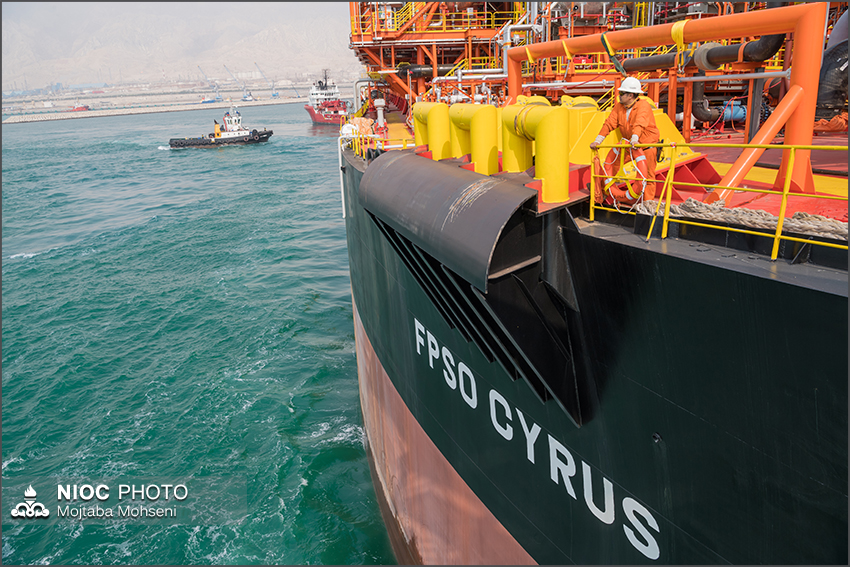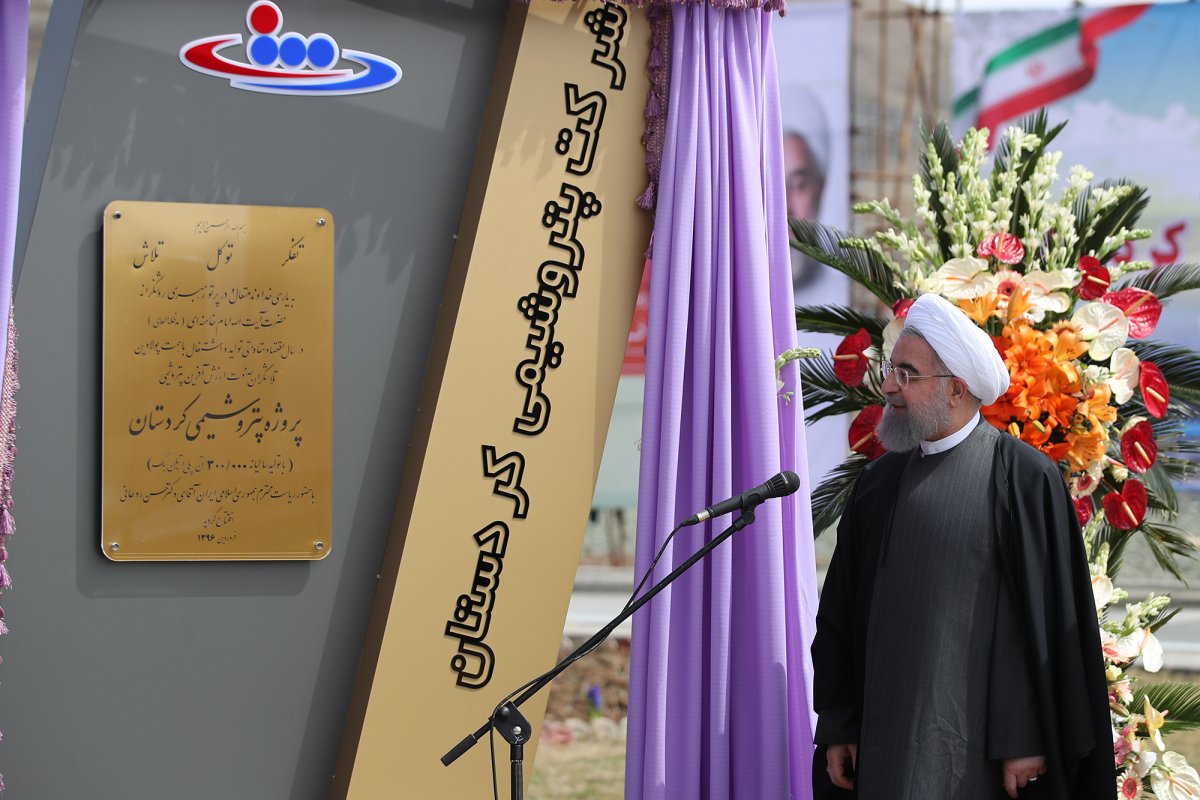Despite a two-week break for the Persian New Year holidays, the energy industry in Iran was moving ahead with government efforts to launch oil, gas and petrochemical projects and maintain the upward trajectory of crude exports. What follows is a list of highlights of the domestic energy sector in the past two weeks.
South Pars Test Phase
After years of development and anticipation, Iran started the trial phase of crude production from the oil layer of the joint South Pars Gas Field in the Persian Gulf, the deputy chief of the National Iranian Oil Company said.
Shana quoted Gholamreza Manouchehri as saying on March 19 that the country’s floating oil production, storage and offloading facility, dubbed as FPSO Cyrus, was drawing oil from South Pars wells last month, adding that output was expected to reach the planned 35,000 barrels a day within five to seven days in the first production phase.

“The FPSO extracts, processes and stores crude oil in one place. The offshore facility is expected to accommodate the first oil vessel in 30-45 days when stockpiles reach an acceptable level,” the official said.
Manouchehri also said that Phase 20 of the South Pars gas project had officially come into operation last month at a rate of 25 million cubic meters per day. Phases 17-21 were slated to be inaugurated by President Hassan Rouhani in the previous fiscal year that ended on March 20.
The five phases will raise Iran's gas production from South Pars by 150 mcm/d in addition to higher ethane output which will be used as feedstock for petrochemical plants.
Officials say the commissioning of new phases will help Iran match or even exceed Qatar’s gas output from South Pars, which is said to be at 650-700 mcm/d. Tehran is developing South Pars, the world’s largest gas field, in 24 phases.
Iran Energy Deals With Russia
NIOC and Russian gas giant Gazprom signed a memorandum of understanding on March 29 to expand collaboration in the gas industry, with a second agreement also inked with Russian State Geological Company (Rosgeologia) on conducting joint seismic surveys on oil and gas reservoirs.
The agreements are part of deals signed by the two sides during Rouhani’s visit to Moscow last week. The signing ceremony was overseen by Rouhani and his Russian counterpart Vladimir Putin.
“Iran-Russia ties have entered a new phase. The two sides are expanding collaboration on oil and gas projects with considerable amounts of investment," Rouhani noted.
Putin also envisaged a bigger role for Russian companies in Iran's energy market, and asserted that Tehran and the Kremlin "cooperate within the framework of the Gas Exporting Countries Forum and coordinate efforts to stabilize global oil markets."
In related news, Russia's Energy Minister Alexander Novak said the NIOC held a presentation for oil and gas companies from his country on its new model of oil contracts in Moscow last month, a second of such arrangements for Russian-based firms.
Meanwhile, Sputnik news agency reported that Tehran “has not offered specific terms on new oil contracts”. An unnamed participant at the presentation told Sputnik that "there was a discussion of general things, not substantial (details).”
Kurdistan Petrochemical Project

A petrochemical plant in the city of Sanandaj in western Kurdistan Province was inaugurated by Rouhani on March 25.
Kurdistan Petrochemical Plant has an annual production capacity of 300,000 tons of polyethylene -- a type of polymer used in packaging and also as insulating material for pipes and cables. The plant has created 700 jobs.
Iran's installed petrochemical output capacity stands at around 65 million tons per annum, but plans are in place to boost capacity by 40 million tons over the next five years.
Iran Oil Production, Exports
Exports of crude oil and gas condensates were close to 3 million barrels per day in the month to March 20, Oil Minister Bijan Namdar Zanganeh said, adding that average outbound shipments were around 2.8 million barrels a day “in the past few months”.
Iran's resurgence in the oil market following the lifting of international economic sanctions in January 2016 caught most international observers by surprise. According to Zanganeh, "Iran added 1 million barrels to its daily crude production within 3-4 months of the lifting of economic restrictions."
It pumped slightly above 3.8 million bpd in February, or some 36,000 bpd higher than the January level, According to the Organization of Petroleum Exporting Country's latest monthly, citing secondary sources.
Under an OPEC deal to cut crude supplies and reduce stockpiles, Iran's average output should not exceed 3.8 million bpd in the first half of the year.


